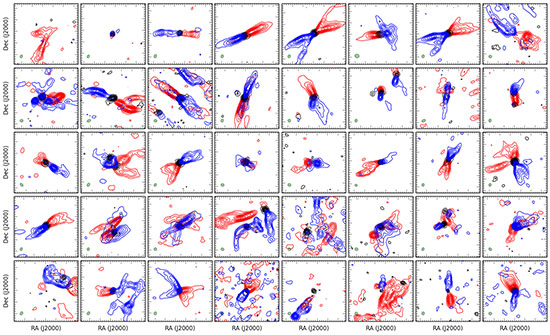Star Formation: Low-Mass:
Alignment between Protostellar Outflows and Filaments
Many stars form in filaments, where gas flows suggest embedded dense cores will rotate primarily parallel or perpendicular to the parent filemant. If angular momentum at the protostar scale is inherited from this core scale, then the rotation axes of newly formed prototars and their bipolar ouflows will share this alignment. SMA observations of resolved bipolar molecular outflows in the Perseus region provides an empirical test (Figure 3). For this sample of protostars, the observed distribution of outflow-filament angles are more consistent with either randomly aligned angles or a mix of projected parallel and perpendicular angles (where a mix of parallel and perpendicular angles requires perpendicular alignment to be more common by a factor of 3). These results show that the angular momentum axis of a protostar are likely independent of its natal filamentary structure, reflecting the process that ultimately funnels material into protostellar systems (Stephens et al. 2017)

